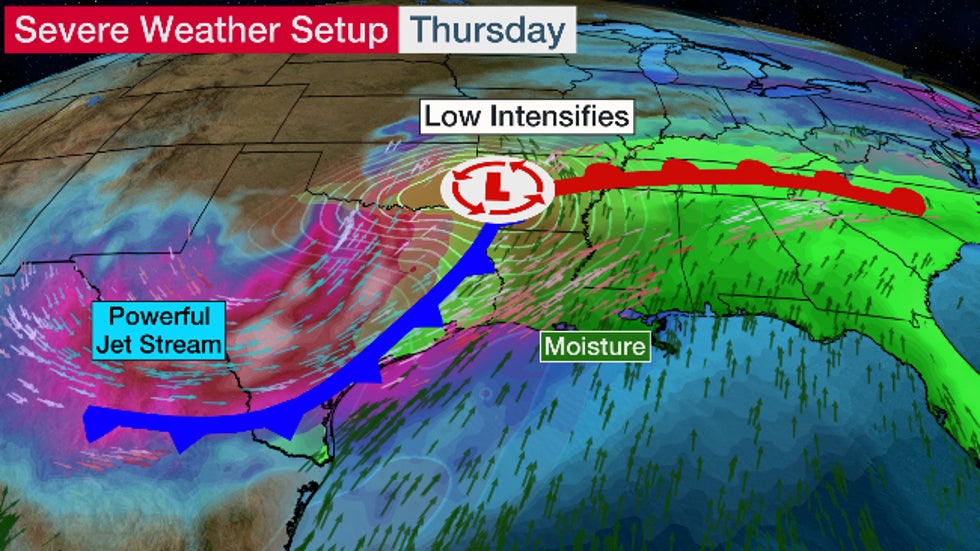
[a href="[URL]https://www.wunderground.com/article/storms/tornado/news/2023-02-27-severe-outbreak-forecast-south[/URL]"](Weather Underground)[/a] A severe weather outbreak is increasingly possible late this week in parts of the South, with a threat of tornadoes, damaging winds, hail and flash flooding from Texas into the Southeast.
This is forecast to happen just days after a swarm of tornadoes and a derecho blasted parts of the Southern Plains Sunday night. Here is what you need to know about this forecast.
The Southern severe weather threat starts Wednesday: At least a few severe thunderstorms are possible as soon as Wednesday from Texas to the Tennessee Valley. Most of these thunderstorms are expected to develop after sunset Wednesday night. Large hail, strong winds and locally flooding rain are all possible in the areas shown below.
Thursday is the greatest concern: The most widespread and potentially dangerous threat of severe thunderstorms appears to be Thursday afternoon and evening across parts of the Deep South. The threat is highest in the darkest-color contours shown below. In their Monday morning outlook, NOAA's Storm Prediction Center said "a regional outbreak of severe weather appears increasingly likely" in the area below, including threats of "large hail, damaging winds, and tornadoes, some of which may be strong."
This threat might last into Friday: Parts of the Southeast, from Alabama into Georgia, eastern Tennessee, northern Florida and the Carolinas, may see some severe thunderstorms Friday and Friday evening. Damaging thunderstorm wind gusts and a few tornadoes are possible.
Here's why this could be an outbreak: The setup for this potential outbreak is straight out of a weather textbook. A powerful jet stream will surge eastward into the South. That will cause low pressure to intensify (possibly to threaten Southern low-pressure records) and pull warm, humid air northward. The volatile mix of instability, wind shear (the change in wind direction and speed with height), moisture and lift has meteorologists concerned about widespread severe thunderstorms with damaging winds and the potential for stronger tornadoes.
Here's what you need to do: If you're in these areas, make sure you're prepared for severe weather. Have multiple ways of receiving watches and warnings from the National Weather Service, including NOAA weather radio and a smartphone app that can alert you even if you're sleeping. Know where to go to seek shelter when a warning is issued.



